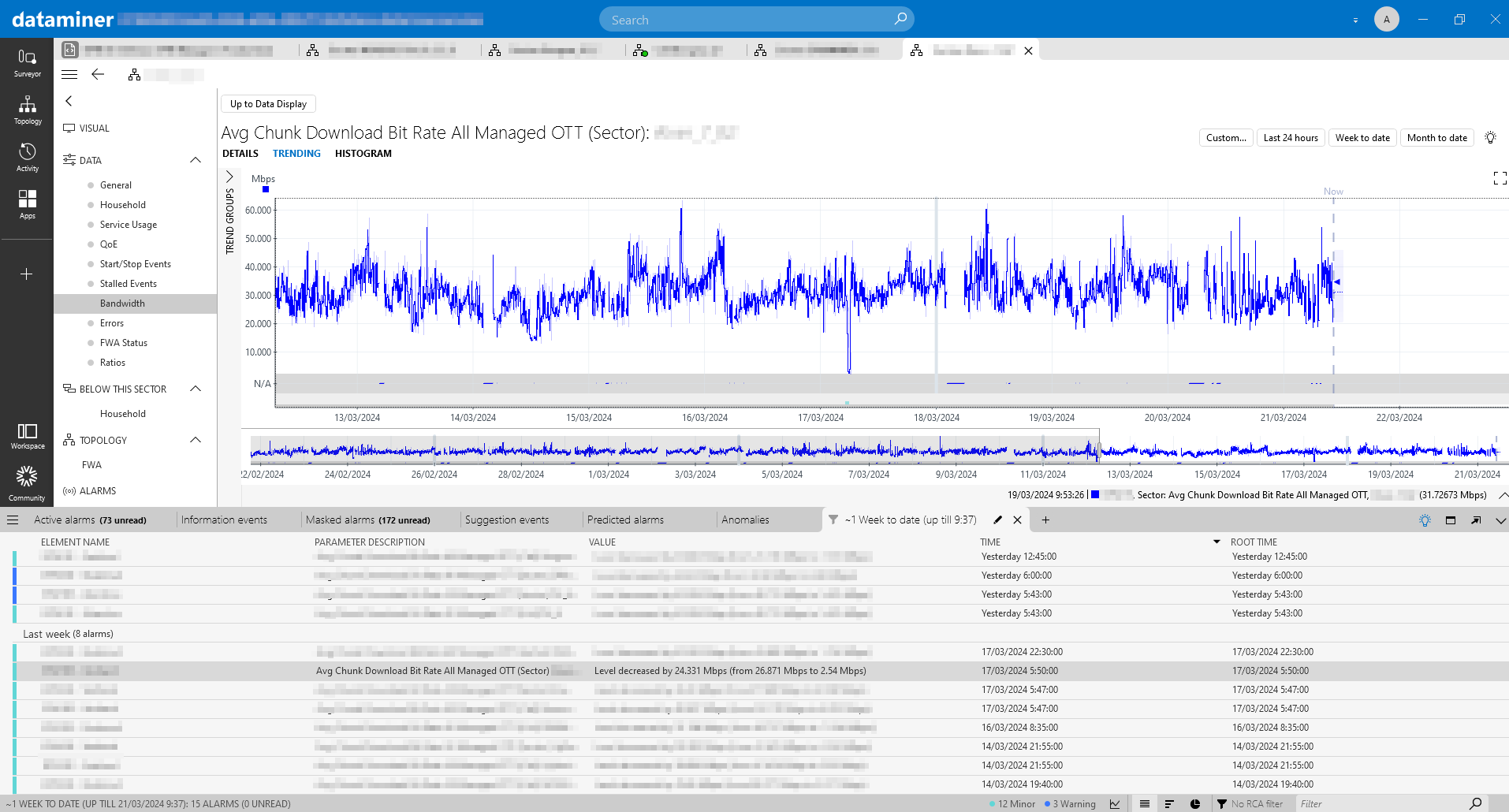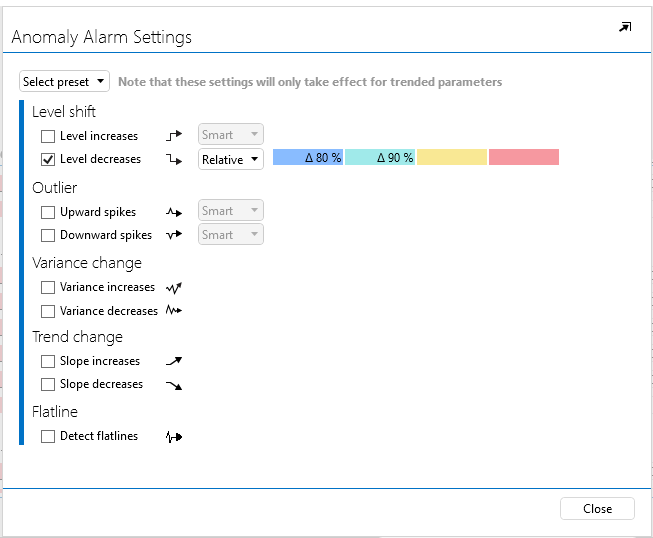solution Use Case
Spotting network outages with anomaly detection

Detecting outages in large networks in a timely manner presents a significant challenge. The sheer scale and multitude of devices involved make it impossible for operators to manually monitor every aspect. Even configuring the appropriate alarm thresholds for various parameters is a complex task, given the diversity of situations and contexts the network must operate in. For instance, typical behavior during the day can differ greatly from nighttime patterns, and rural regions exhibit different behaviors compared to urban areas.
A major Nordic telecommunications company has turned to DataMiner’s Anomaly Detection features to address this challenge. The company operates a 5G fixed wireless access network to connect households in rural areas. This network includes numerous cell towers across the country, each typically equipped with three antennas positioned to cover three distinct sectors around the tower. This use case illustrates how the company implemented behavioral anomaly detection to identify sudden, unexpected drops in chunk download bit rate for each sector, which can indicate an issue. Since anomaly detection learns a parameter’s typical behavior from its historical data, its drop detection works effectively across diverse sectors with a single configured threshold, regardless of whether the sector covers a small or large number of households.
USE CASE DETAILS
 In the alarm template for network sectors, a custom configuration for alarming on anomalies is applied to the Avg Chunk Download Bit Rate All Managed OTT parameter, along with static thresholds.
In the alarm template for network sectors, a custom configuration for alarming on anomalies is applied to the Avg Chunk Download Bit Rate All Managed OTT parameter, along with static thresholds.
 A warning will be generated when the download bit rate suddenly decreases by 80% or more. If the decrease reaches 90% or more, a minor alarm will be generated.
A warning will be generated when the download bit rate suddenly decreases by 80% or more. If the decrease reaches 90% or more, a minor alarm will be generated.
 When an unexpected drop in download bit rate occurs, operators will be alerted through the Alarm Console. They can then inspect the parameter more closely using the gathered trend data. This trend graph also indicates earlier drops.
When an unexpected drop in download bit rate occurs, operators will be alerted through the Alarm Console. They can then inspect the parameter more closely using the gathered trend data. This trend graph also indicates earlier drops.
 This is a close-up of the drop in download bit rate, also shown in the previous image.
This is a close-up of the drop in download bit rate, also shown in the previous image.